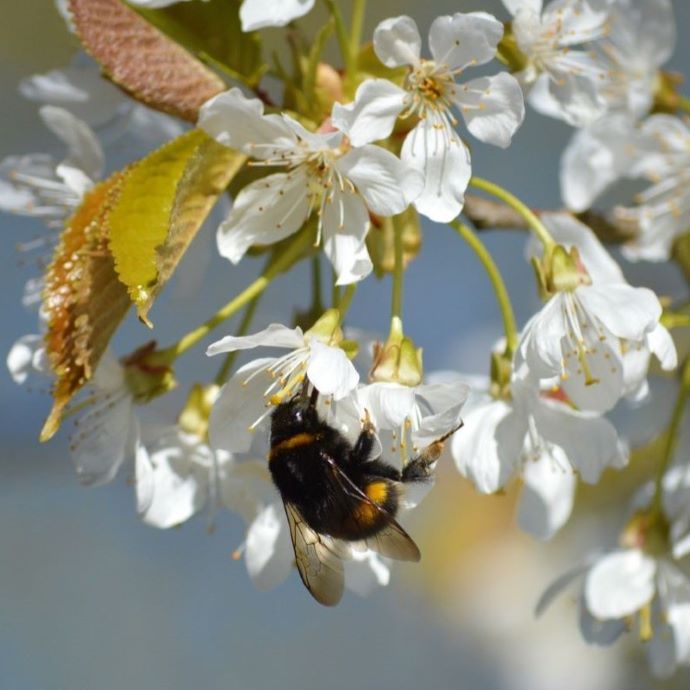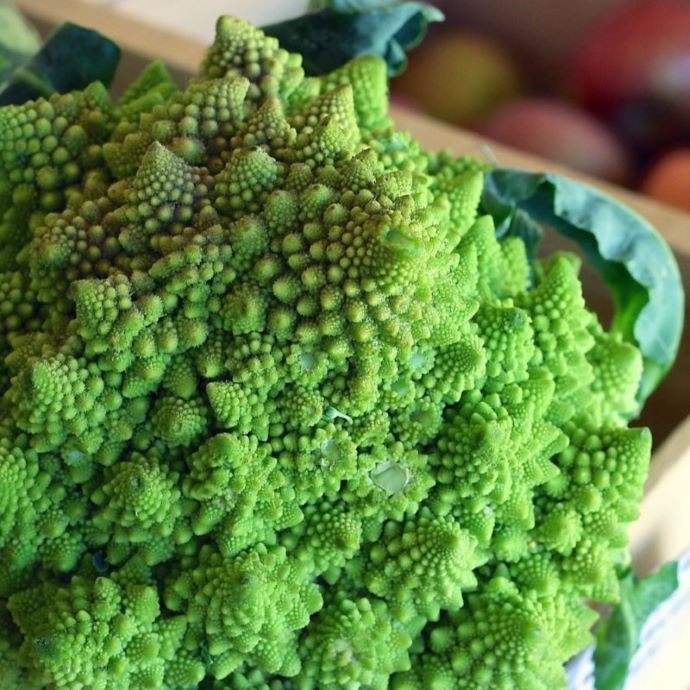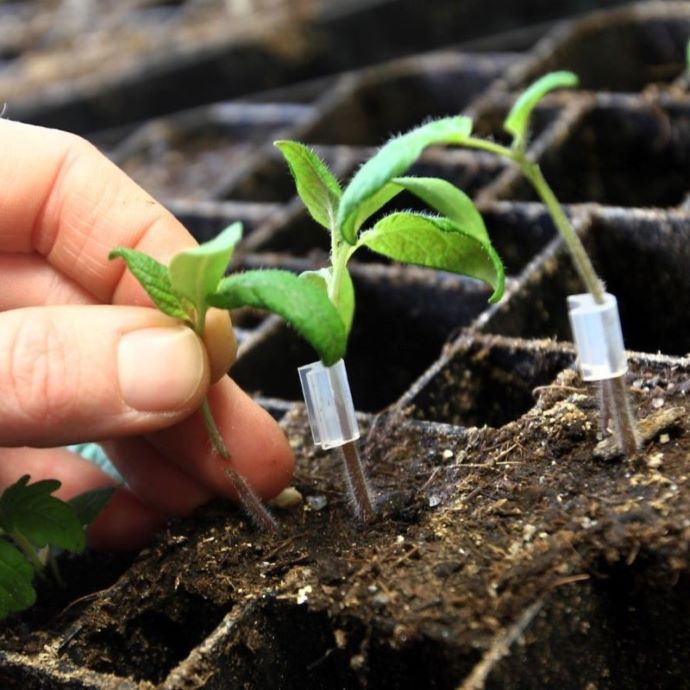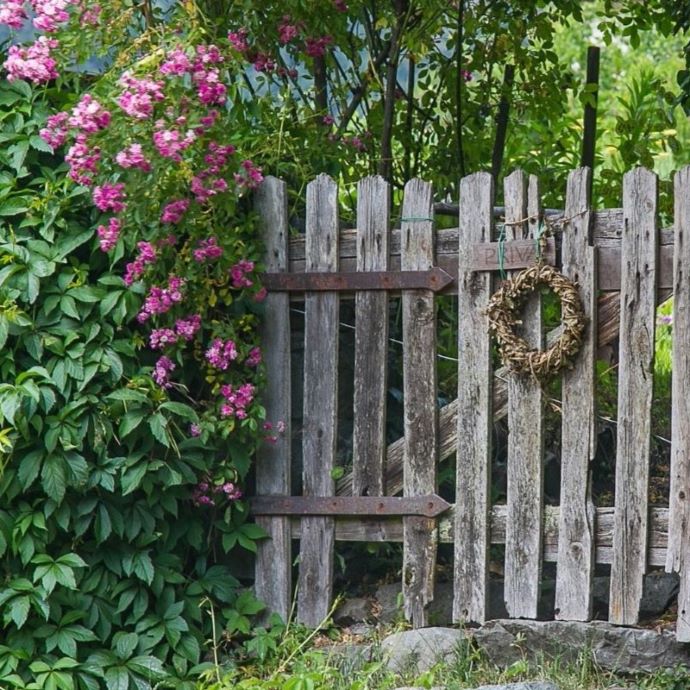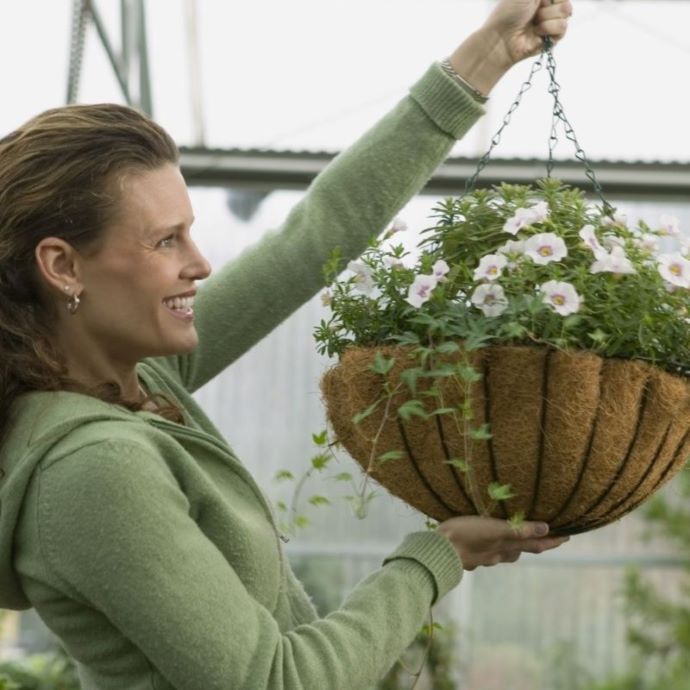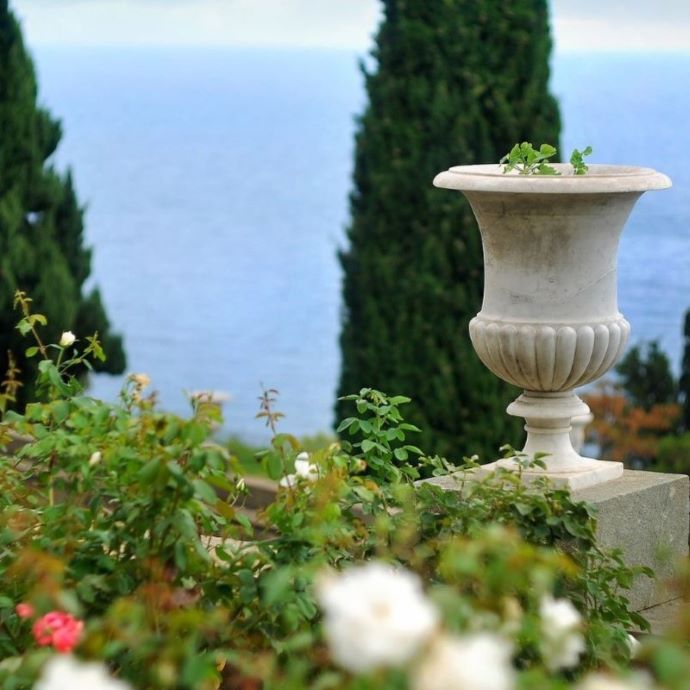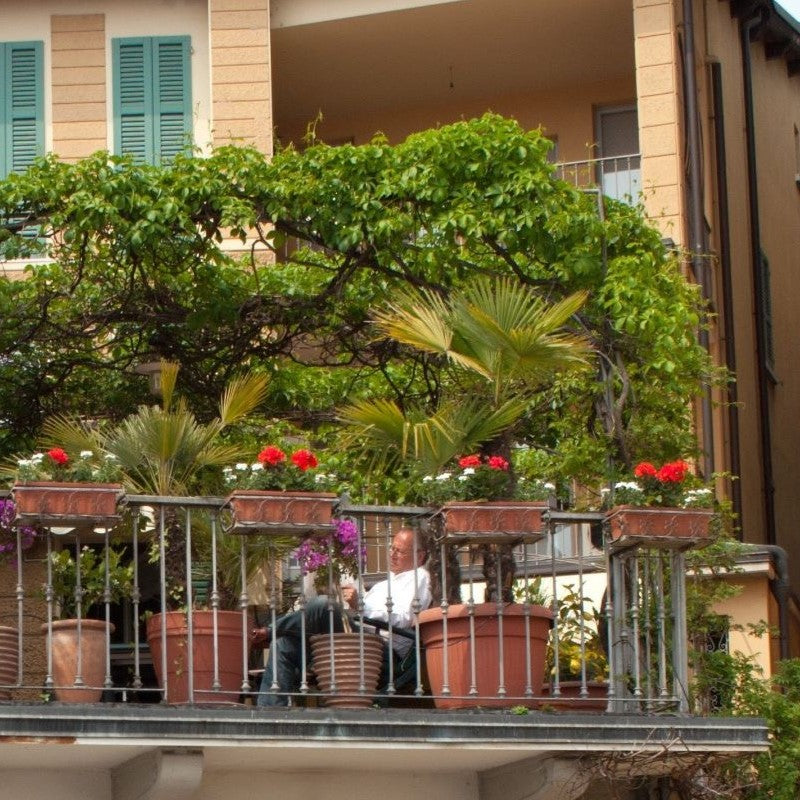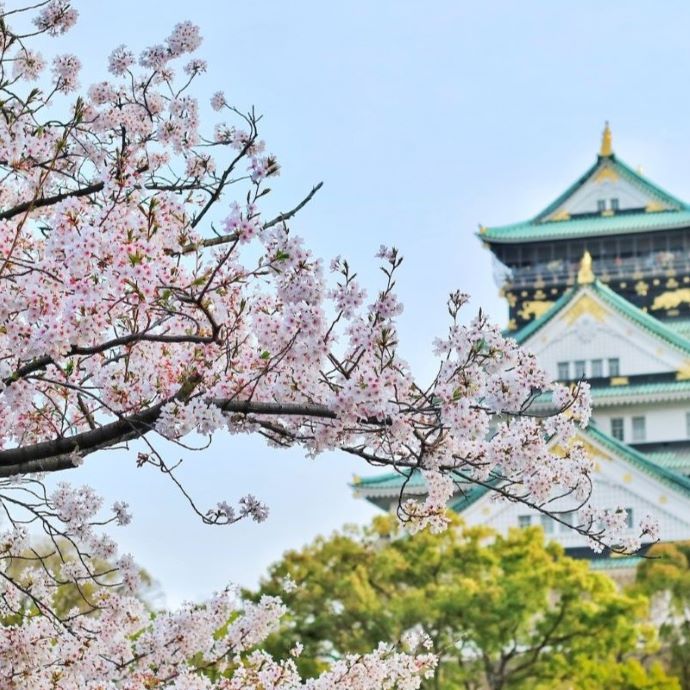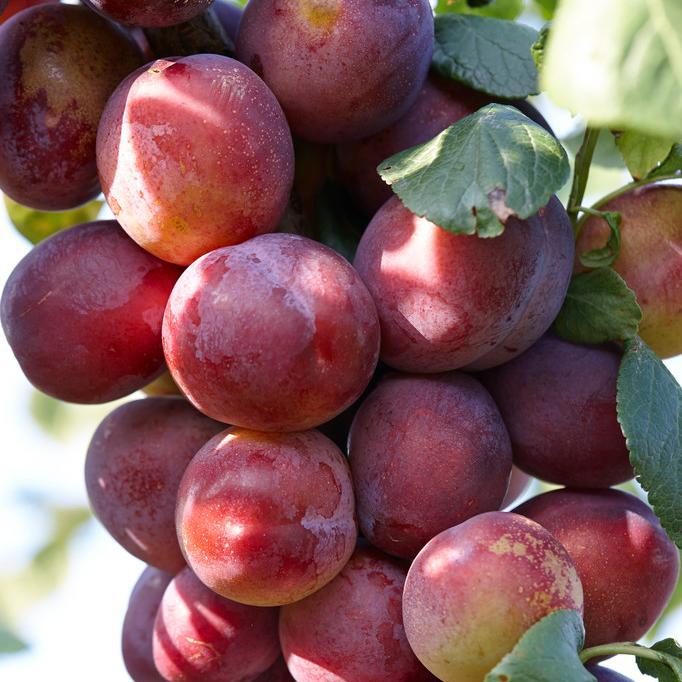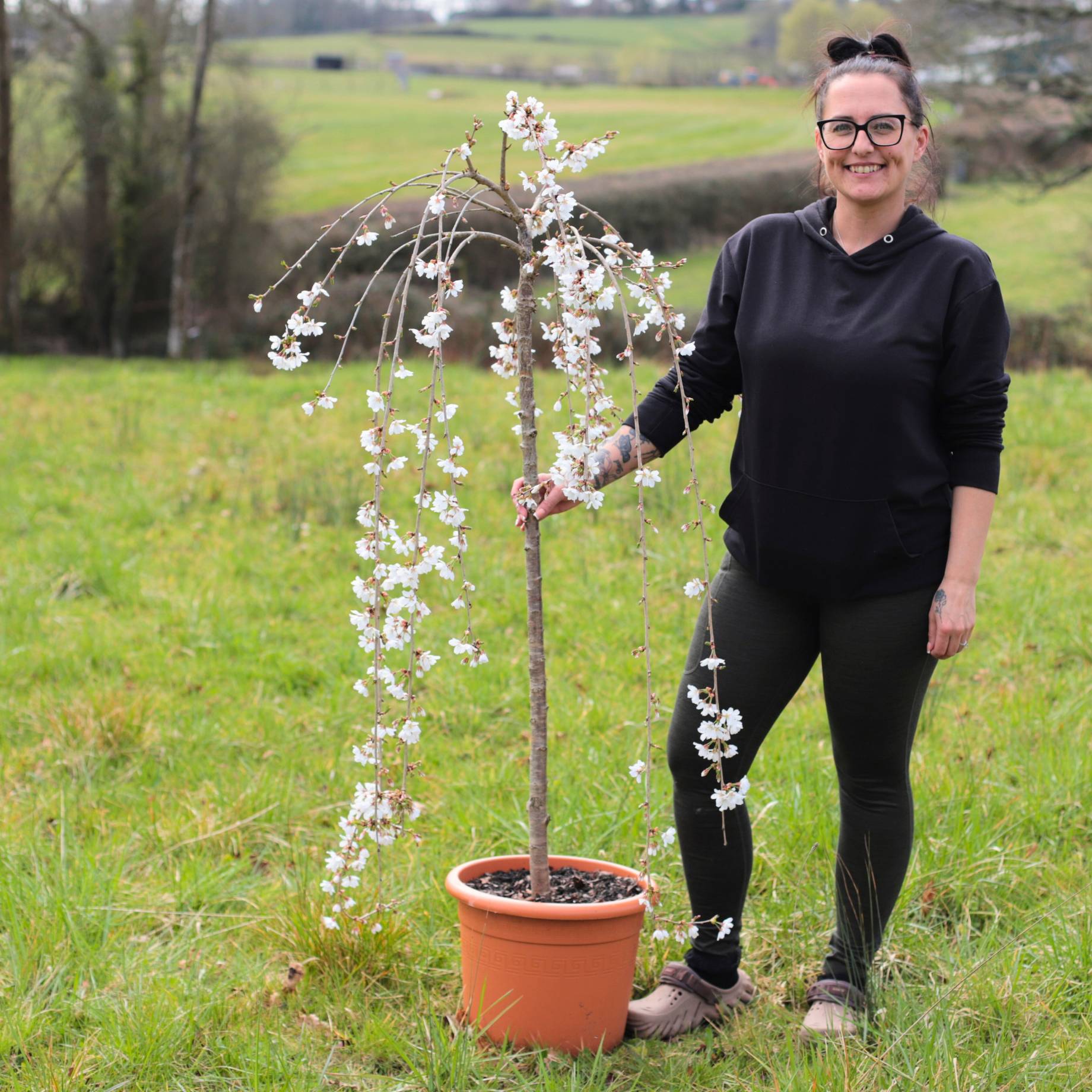Advice & Inspiration
Best Trees for Small Gardens
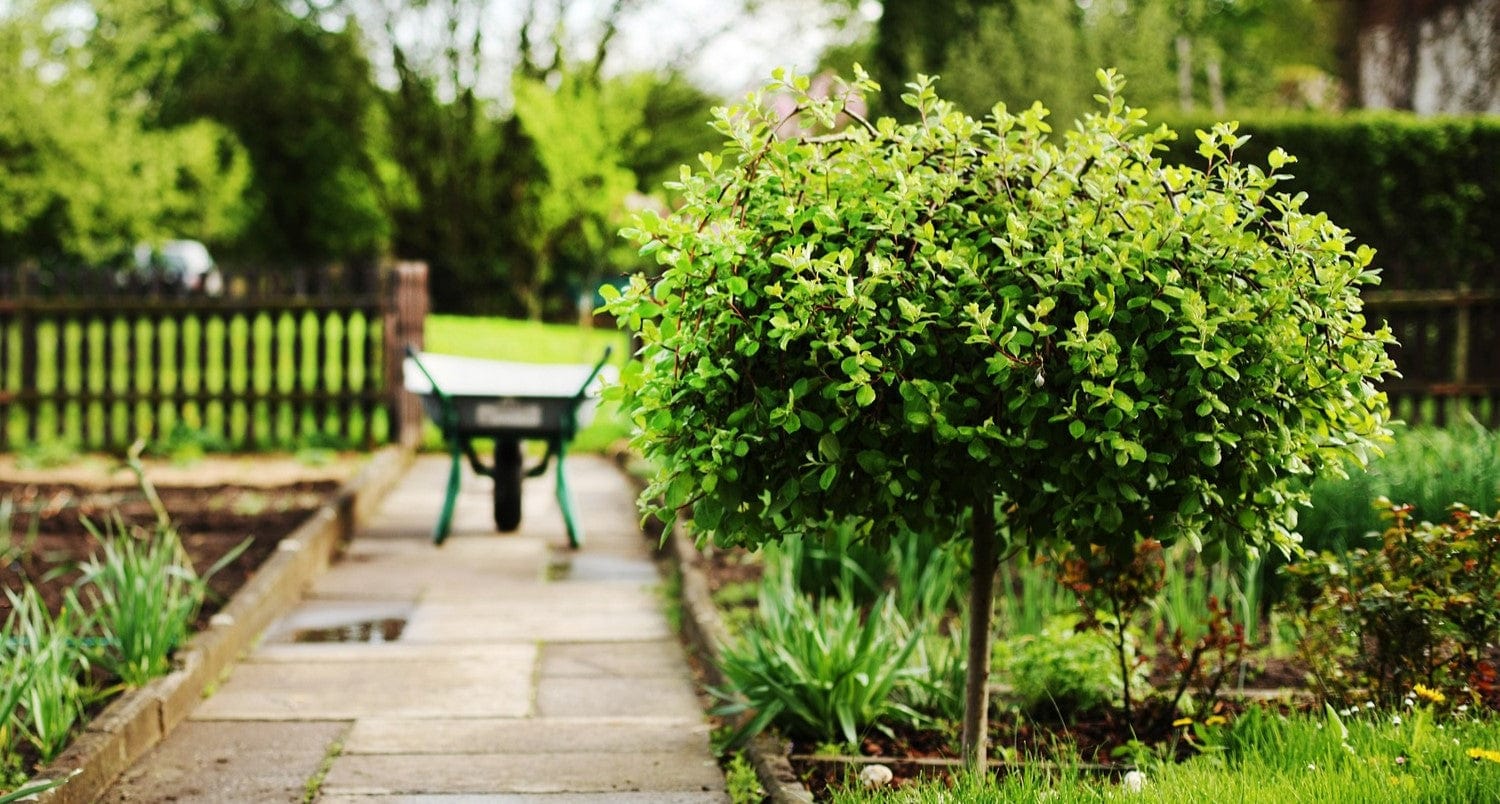
Trees! They give us spring blossom, summer fruit, the golds and reds of autumn and the evergreens of winter – not to mention shade, shelter and oxygen. All of which is to say they’re pretty much an essential for any outdoor space. But what if your garden is a bit on the small side, or you don’t have a garden at all?
The good news is that with more and more dwarf or naturally compact varieties becoming available, there’s a tree to suit even the smallest of spaces, as well as lots that can be grown in containers. Read our handy guide to the best trees for small gardens for information on what makes a tree suitable for smaller spaces, as well as some of our favourite varieties.
Jump to:
- What makes a good tree for a small garden?
- Best evergreen tree for small gardens
- Best flowering tree for small gardens
- Best fruiting tree for small gardens
- Best ornamental tree for small gardens
- Best columnar tree for small gardens
- Best tree for patios and balconies
What makes a good tree for a small garden?
There are a few factors worth considering when choosing a tree for a small garden, factors which will help you make the right choice for your space the first time around, rather than planting something wholly unsuitable and being left with the faff of uprooting it a few years down the line when it outgrows its space.
Height and spread
Clearly, the most important thing to consider when talking about trees for smaller spaces is the size of the plant in question. If you only have a compact patio or a boxed in back lawn, then opting for a mighty oak probably won’t serve you well in the longer term.
Some trees are naturally smaller than others, including certain maple, cherry blossom and magnolia varieties, while others have been trained in such a way that they remain on the diminutive side (patio trees).
You want to be looking for trees that have a maximum eventual height and spread of three metres or under – with fruit trees, this means looking for a dwarfing or semi-dwarfing rootstock, but we’ll come to discuss these later on.

Multi-season interest
The next thing you’ll want to think about is getting bang for your buck, seasonally speaking. If you only have room for one tree, then you want to get more than just a couple of weeks of interest from it each year. Otherwise you’ll feel a bit hard done by. Consider trees with multiple seasons of interest, be that through evergreen foliage, autumnal colour, long flowering periods or delicious fruits.

Container suitability
Not every tree is suitable for container growing, which is what you’ll be doing if you want to grow a tree on your patio or terrace. Even if you’ve done your research and found that your tree can viably grow in a pot, you still need to pick the right pot (and potting medium).
As far as the pot itself is concerned, we’d suggest going for something like a terracotta pot if you live somewhere particularly blowy, as these weighty containers provide your tree with additional ballast and helps keep it upright when gales come a’blowing. If you want to be able to move your tree about, then a lightweight plastic pot is the best option. Plus, the latter will see its compost dry out less quickly than the former so if you find watering tedious, then that’s another thing to consider.
For the potting medium, we’d recommend a peat-free, loamy compost like John Innes No. 3, which will provide your tree with all the support it needs to establish healthy foundations. Alternatively, if you’re growing a younger tree – one that’s not much more than a sapling – then planting it initially in John Innes No. 2 compost can be beneficial.

The best trees for small gardens and patios
Best evergreen tree for small gardens
Now, forgive us for starting with a tree that can actually grow to over three metres in height, but hear us out. Eucalyptus gunnii (a eucalyptus also known as the cider gum) is an absolute gem of a tree, boasting fragrant glaucous foliage and peeling creamy bark, as well as being recognised by the RHS with its Award of Garden Merit. And while this tree can grow quite tall, it’s also easily pruned and kept shorter, per the space available to it.
Honourable mention(s): Photinia ‘Red Robin’ Patio Tree, Holly ‘Alaska’ Patio Tree and Euonymus 'Emerald Gaiety' Patio Tree.

Source: Flickr, CRebholz
Best flowering tree for small gardens
If blossoms are your thing, then look no further than the ‘Kiku-shidare-zakura' Weeping Cherry Blossom. Growing to roughly two-and-a-half metres in height, this Prunus variety dazzles with its fully double, punchy pink flowers, pendulous branches and glossy green foliage. Perfect for a front garden or a feature tree at the heart of the lawn, few trees come even close to this lil’ crackerjack.
Honourable mention(s): ‘Pendula Rubra’ Cherry Blossom and Redbud ‘Avondale’ Patio Tree.

Best fruiting tree for small gardens
If you want to grow fruit at home but only have a small garden, then you’ll need to choose a tree grafted onto an appropriate rootstock and preferably one that’s self-fertile (meaning that it doesn’t need a pollinating partner to bear fruit). Rootstocks comprise the root and lower part of a tree’s trunk, onto which a specific variety ‘scion’ (bud or shoot) is joined at a point called the graft union. The rootstock controls the vigour of the tree – how big it grows – while the scion gives you the tree’s fruiting characteristics.
When selecting your fruit tree, look for a dwarfing rootstock option (these typically top out at around the three metre mark). For apples, pick M26 or M27; for pears, choose Quince C; for cherries, opt for Gisela 5; for plums, select Pixy; and for peaches and apricots, pick Montclare.
It’s tricky to single out just one fruit tree as there are so many wonderful options out there. However, when push comes to shove, we’re going to go for the ‘Victoria’ Plum Tree. It’s a classic for a reason, after all. Self-fertile, a recipient of the RHS’s prestigious Award of Garden Merit and also certified as one of its Plants for Pollinators, ‘Victoria’ reliably yields jammy plums in the summer and glorious white blossoms in the spring. What’s not to like?
Honourable mention(s): ‘Stella’ Cherry Tree, ‘Tomcot’ Apricot Tree and ‘Brown Turkey’ Fig Tree.

Best overall ornamental tree for small gardens
I freely admit that the term best is, in horticultural terms, at least, highly subjective. One person’s rose is another person’s clematis (does that make sense? Probably not). That said, there’s one ornamental tree perhaps more than any other which, in my eyes, could stake a confident claim to being the best ornamental tree for small gardens. And that tree is the Japanese Maple ‘Garnet’.
Another RHS-award-winner, ‘Garnet’ is one of the most impactful acers, despite its diminutive size. With filigree-like red-purple foliage that takes on more vivid red hues come the autumn, this tree typifies planting elegance in a way few others can hope to emulate. Add to that the plant’s slight weeping habit and you’re left with the definition of “small but perfectly formed”.
Honourable mention(s): 'Hakuro-Nishiki' Flamingo Willow Tree and ‘Kilmarnock’ Dwarf Weeping Willow Tree.

Best columnar tree for small gardens
If you have the space to grow upwards but not outwards, then a columnar (also known as ‘flagpole’) tree might be right up your narrow alley. RHS-award-winning ‘Amanogawa’ Cherry Blossom is our pick for this category, its narrow upswept (fastigiate) branches resulting in a tree that can grow to around four metres tall but only a metre or so wide. I mean, just look at it – it’s a stunner!
Honourable mention(s): Cordon Apple Tree, Cordon Pear Tree and ‘Crimson Sentry’ Norway Maple Tree (which can be pruned much shorter than its ultimate height).
Best tree for patios and balconies
If you’ve only got a paved outdoor space or balcony at hand, then don’t worry, you can still grow a tree or two. One of the benefits of container-grown trees when compared with those grown in the open ground is that you can control their surrounding conditions better. Which means you can grow trees that wouldn’t otherwise survive British winters by overwintering them indoors.
Our Grafted Patio Lemon Tree, for instance, will happily grow in a conservatory or greenhouse throughout the colder months, before being brought back outside later in the year to soak up the sun. What’s more, the tree’s delicate white blooms are fabulously fragrant and pop up all year long. When life gives you lemon trees, make them as comfortable as possible…
Honourable mention(s): Patio Blood Meyer Orange Tree and ‘Bay Junior’ Patio Bay Tree.

Final thoughts
So, there you have it! Hopefully, this has left you itching to go out there and get your own perfectly-proportioned powerhouse. I’ve got a patio cherry tree in the front garden that’s just starting to get its blossoms and, honestly, every time I get home and see it, it makes my heart sing a little. If you want singing hearts (and why wouldn’t you) then you know what you need to do. While you’re here, check out our guides to growing fruit trees in pots and small garden design.
